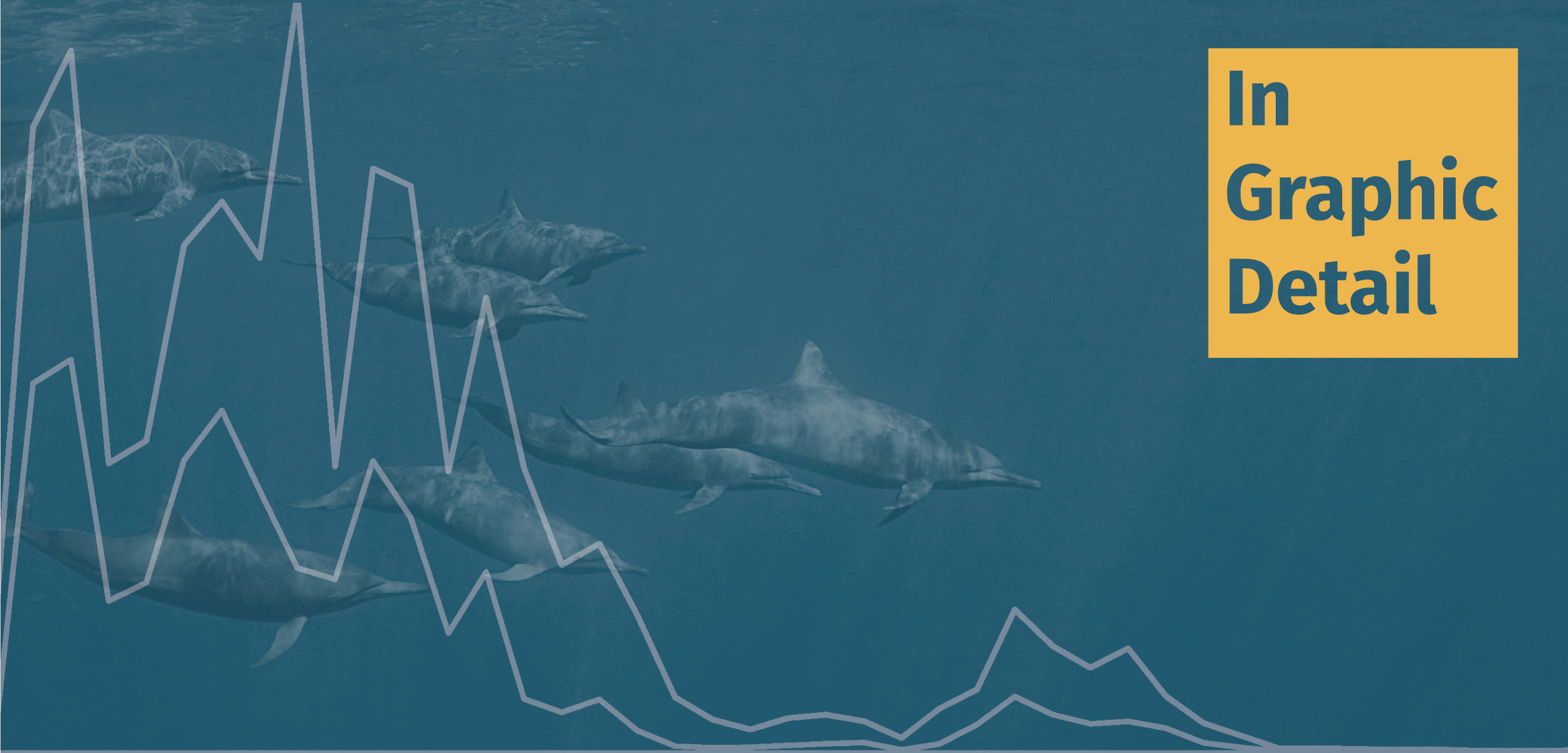In Graphic Detail: Solving Tuna’s Dolphin By-catch Problem
The number of dolphins drowning in nets set for yellowfin in the eastern Pacific has plummeted more than 99 percent, but there’s a hitch.
Article body copy
In the vast eastern tropical Pacific Ocean, yellowfin tuna grow as big as dolphins. Here, huge schools of yellowfin commonly ply the waters with the cetaceans, while seabirds flock overhead. In the multispecies gatherings, dolphins and tuna may find protection in numbers from hungry sharks and better luck hunting smaller fish, which the diving birds also snatch from above. But in the late 1950s, tuna fishers from the United States turned the aggregations to their advantage.
Fishers began setting nets on surfacing dolphins to trap the big-ticket tuna swimming below. Captains hired helicopter pilots to spot flocking seabirds and speedboat drivers to chase the associated dolphins and tuna into waiting nets. The new method yielded yellowfin, but also entangled and drowned roughly 400,000 to 600,000 dolphins per year. More than six million dolphins have died—twice the number of whales killed by industrial whaling during the 20th century.
The tuna fishery hit two species particularly hard: by 1993, the number of eastern spinner dolphins had plunged by 56 percent, while northeastern offshore spotted dolphins had nosedived by 81 percent.
The graph below zooms in on the last 26 years of data in the time series.
Early on, captains tried to curtail by-catch, first by modifying gear and techniques, such as deploying divers to disentangle dolphins, but deaths remained high into the 1970s. Public outcry prompted the US Congress to pass the 1972 Marine Mammal Protection Act, which mandated near-zero mortality, confirmed by independent on-board observers, and a later amendment banned the explosives that fishers were using to herd the animals. The advent of dolphin-safe tuna in 1990 incentivized fishers to catch yellowfin without setting nets on cetaceans. These and other efforts have proved remarkably successful, with dolphin deaths plummeting by over 99 percent.
But the problem is not entirely solved: tuna fishers from outside the United States continue to catch dolphins, and since the last survey in 2006, it has been unclear if the populations are recovering. Repeated chases and corralling can disrupt mating and increase infant mortality, keeping dolphin numbers down. And there are indications that some fisheries observers might be underreporting the number of deaths, says Oregon State University marine mammal ecologist Lisa Ballance, who led a recent review of the dolphin by-catch. According to official counts, the fishery has killed about 1,000 of the cetaceans per year since 2000. “Should we be okay with that, as long as we can eat our tuna?” Ballance asks. “We should all do more soul-searching along those lines.”

